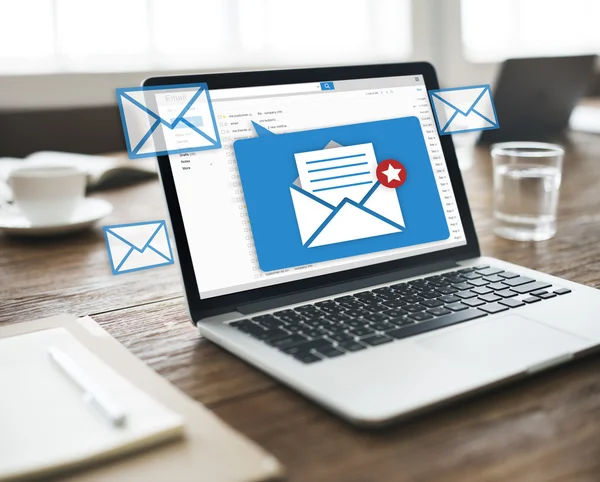Demystifying DMARC: What Is DMARC And How Does It Enhance Email Security
In an era where cyber threats loom large, ensuring the security of email communication is paramount for individuals and organizations alike. DMARC, which stands for Domain-based Message Authentication, Reporting, and Conformance, is a critical tool in the arsenal of email security protocols. This article aims to demystify DMARC by elucidating its purpose, mechanics, and the ways in which it bolsters email security.
Understanding DMARC
What is DMARC?
DMARC is an email authentication protocol that builds upon the widely used SPF (Sender Policy Framework) and DKIM (DomainKeys Identified Mail) standards. It enables domain owners to specify how their emails should be authenticated and what action should be taken if authentication fails. By providing a framework for email receivers to verify the authenticity of incoming messages, DMARC helps combat email spoofing, phishing, and other malicious activities. Go through this webpage for more information.
How Does DMARC Work?
At its core, DMARC operates by allowing domain owners to publish policies in their DNS records. These policies instruct email receivers on how to handle messages that claim to originate from the domain. When an email is sent, the receiving server checks the sender's domain against the published DMARC policy. If the email passes authentication according to the policy, it is delivered as usual. However, if authentication fails, the receiver follows the instructions specified in the DMARC policy, which may include quarantining or rejecting the message.

Enhancing Email Security with DMARC
Prevention of Email Spoofing
One of the primary benefits of DMARC is its ability to thwart email spoofing attacks. By enabling domain owners to assert control over who can send emails on their behalf, DMARC significantly reduces the likelihood of malicious actors impersonating legitimate senders. This helps safeguard recipients against falling victim to phishing scams and fraudulent activities carried out via email.
Strengthening Trust and Reputation
DMARC implementation not only enhances email security but also contributes to building trust and maintaining a positive sender reputation. By authenticating emails and reducing the risk of unauthorized use of domain names, organizations can bolster their credibility among recipients and email service providers. This, in turn, can lead to improved email deliverability rates and a higher likelihood of messages reaching recipients' inboxes instead of being flagged as spam.
Facilitating Effective Reporting and Analysis
Another valuable aspect of DMARC is its reporting functionality, which provides domain owners with insights into email authentication results and potential abuse of their domains. DMARC reports contain detailed information about email activity, including data on authentication failures, sources of unauthorized emails, and compliance with the configured policies. By leveraging these reports, organizations can identify security threats, fine-tune their email authentication settings, and take proactive measures to mitigate risks.
The Importance of DMARC Adoption
Mitigating Email Fraud and Impersonation
Email fraud and impersonation are pervasive threats that can have severe consequences for individuals and organizations. By leveraging DMARC's authentication capabilities, businesses can significantly reduce the risk of falling victim to these malicious activities. DMARC empowers domain owners to explicitly define their email policies, thereby establishing a clear framework for identifying and addressing unauthorized email senders. This proactive approach helps safeguard sensitive information, protect brand reputation, and preserve trust among customers and partners.

Compliance with Regulatory Requirements
In addition to enhancing security, DMARC adoption can also assist organizations in meeting regulatory compliance requirements related to data protection and privacy. Various regulatory frameworks, such as GDPR (General Data Protection Regulation) and HIPAA (Health Insurance Portability and Accountability Act), mandate the implementation of robust security measures to safeguard sensitive information, including email communications. By implementing DMARC, organizations demonstrate their commitment to safeguarding personal data and mitigate the risk of non-compliance penalties.
Overcoming Challenges in DMARC Implementation
Complexity of Configuration
While the benefits of DMARC adoption are clear, many organizations encounter challenges when it comes to implementing and configuring DMARC policies effectively. The complexity of DMARC configuration, particularly for organizations with diverse email infrastructures and third-party service providers, can pose significant hurdles.
However, by leveraging resources such as DMARC deployment guides, consulting services, and automated tools, organizations can streamline the implementation process and maximize the effectiveness of their DMARC policies.
Managing False Positives and Negatives
Another common challenge in DMARC implementation is the management of false positives and negatives, which can occur when legitimate emails are incorrectly classified as spam or unauthorized. This can result in disruption to legitimate communication channels and impact business operations.
To mitigate this risk, organizations should regularly monitor DMARC reports, analyze authentication results, and fine-tune their policies based on observed patterns and feedback from stakeholders. Additionally, implementing mechanisms such as DKIM alignment and SPF alignment can help minimize the occurrence of false positives and enhance the accuracy of email authentication.
Future Trends and Developments in DMARC
Evolution of Email Security Standards
As cyber threats continue to evolve, the landscape of email security standards and protocols is constantly evolving to address emerging challenges. While DMARC represents a significant advancement in email authentication, ongoing research and development efforts are underway to enhance its effectiveness further. This includes initiatives to standardize additional authentication mechanisms, improve reporting capabilities, and streamline the implementation process for organizations of all sizes.
Integration with Emerging Technologies
Furthermore, the integration of DMARC with emerging technologies such as artificial intelligence (AI) and machine learning holds promise for enhancing email security and threat detection capabilities. By leveraging AI-driven algorithms to analyze email behavior patterns, organizations can identify anomalies, detect potential threats, and proactively respond to security incidents. This synergy between DMARC and advanced technologies underscores the importance of continuous innovation and collaboration in the fight against cybercrime.

